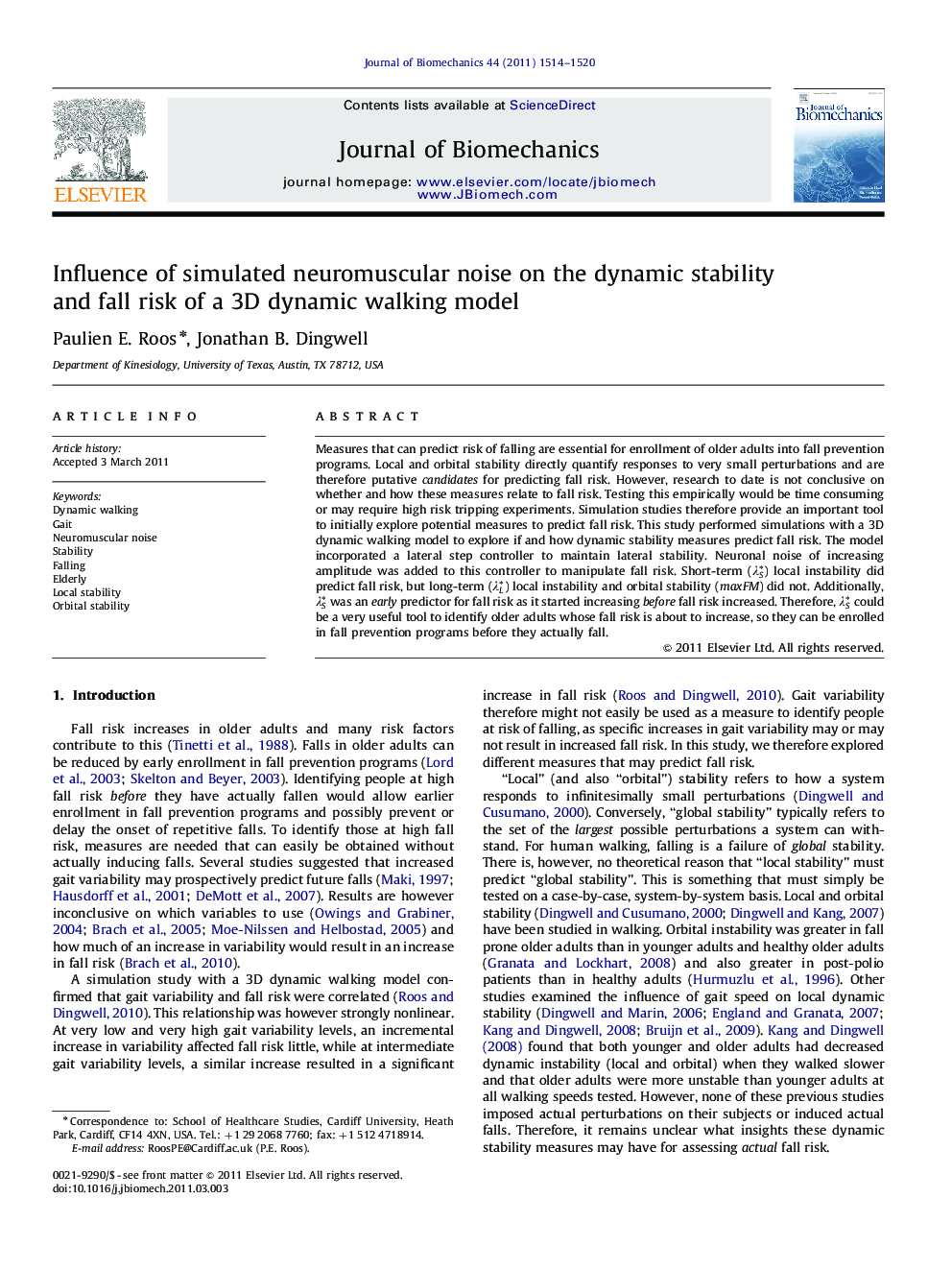| Article ID | Journal | Published Year | Pages | File Type |
|---|---|---|---|---|
| 10433419 | Journal of Biomechanics | 2011 | 7 Pages |
Abstract
Measures that can predict risk of falling are essential for enrollment of older adults into fall prevention programs. Local and orbital stability directly quantify responses to very small perturbations and are therefore putative candidates for predicting fall risk. However, research to date is not conclusive on whether and how these measures relate to fall risk. Testing this empirically would be time consuming or may require high risk tripping experiments. Simulation studies therefore provide an important tool to initially explore potential measures to predict fall risk. This study performed simulations with a 3D dynamic walking model to explore if and how dynamic stability measures predict fall risk. The model incorporated a lateral step controller to maintain lateral stability. Neuronal noise of increasing amplitude was added to this controller to manipulate fall risk. Short-term (λSâ) local instability did predict fall risk, but long-term (λLâ) local instability and orbital stability (maxFM) did not. Additionally, λSâ was an early predictor for fall risk as it started increasing before fall risk increased. Therefore, λSâ could be a very useful tool to identify older adults whose fall risk is about to increase, so they can be enrolled in fall prevention programs before they actually fall.
Related Topics
Physical Sciences and Engineering
Engineering
Biomedical Engineering
Authors
Paulien E. Roos, Jonathan B. Dingwell,
